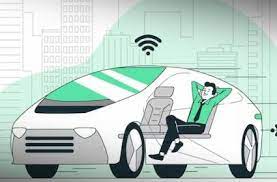Addressing Self-Driving Cars Dark Skin Detection

Equity in Autonomous Transportation
The emergence of self-driving cars represents a revolutionary advancement in transportation technology. These vehicles have the potential to reduce accidents, alleviate traffic congestion, and provide mobility solutions to those who cannot drive, such as the elderly and disabled. However, as the development of autonomous vehicles progresses, it has become apparent that there are significant challenges related to the technology’s ability to detect and respond to individuals with dark skin tones. In this article, we explore the crucial issue of dark skin detection in self-driving cars, the implications of this challenge, and the steps being taken to address it.
The Challenge of Self-Driving Cars Dark Skin Detection

- Sensor Technology: Self-driving cars rely heavily on a variety of sensors, including cameras, lidar, radar, and ultrasonic sensors, to perceive their surroundings and make driving decisions. These sensors capture data about pedestrians, cyclists, and other objects in the vehicle’s vicinity. However, some sensor technologies have limitations when it comes to accurately detecting and recognizing individuals with darker skin tones.
- Bias in Data: One of the primary reasons for the challenge of dark skin detection is the bias in the data used to train machine learning algorithms. Many datasets used for training autonomous vehicle systems have been predominantly composed of images and data from individuals with lighter skin tones. This lack of diversity can lead to biases in the algorithms, making it difficult for self-driving cars to detect and respond to individuals with darker skin tones.
- Lighting Conditions: Lighting conditions also play a significant role in the ability of sensors to detect objects. Low-light conditions or harsh lighting can further exacerbate the challenge of accurately recognizing individuals with dark skin tones.
Implications of Dark Skin Detection Challenges

The issues surrounding dark skin detection in self-driving cars have several important implications:
- Safety Concerns: Inaccurate detection of pedestrians or other road users can pose safety risks, potentially leading to accidents or near misses. It is crucial for autonomous vehicles to reliably detect all individuals, regardless of their skin tone, to ensure the safety of all road users.
- Equity and Accessibility: Autonomous transportation is often hailed as a solution to improve mobility for underserved communities, including those with limited access to transportation. However, if self-driving cars struggle to detect and respond to individuals with dark skin tones, it could exacerbate existing disparities in access to transportation.
- Trust and Adoption: Building public trust in self-driving technology is essential for its widespread adoption. If concerns about biased detection persist, it could hinder the acceptance of autonomous vehicles and slow down their integration into society.
Addressing the Challenge

- Diverse Data Collection: To address bias in dark skin detection, efforts are underway to collect more diverse data for training autonomous vehicle algorithms. This includes capturing a wide range of skin tones, ethnicities, and gender identities to create more representative datasets.
- Algorithmic Improvements: Researchers and engineers are working to develop algorithms that are less susceptible to bias and better equipped to recognize individuals with varying skin tones, even under challenging lighting conditions.
- Testing and Validation: Rigorous testing and validation processes are essential to ensure that self-driving cars can accurately detect and respond to all road users. Testing should encompass a broad range of skin tones and lighting conditions to identify and address any potential issues.
- Transparency and Accountability: Companies developing self-driving technology must be transparent about their efforts to address the challenge of dark skin detection. Additionally, there should be mechanisms in place for accountability and ongoing monitoring to prevent biased outcomes.
Conclusion: Self-Driving Cars Dark Skin Detection

Self-driving cars have the potential to transform transportation and make our roads safer and more accessible. However, the challenge of accurately detecting individuals with dark skin tones is a significant hurdle that must be overcome to ensure equitable and safe autonomous transportation.
Efforts to address this issue, including diverse data collection, algorithmic improvements, testing, and transparency, are essential steps toward achieving a future where self-driving cars serve everyone, regardless of their skin tone or background. By working collectively to address these challenges, we can create a transportation system that truly reflects the principles of equity and inclusivity.